




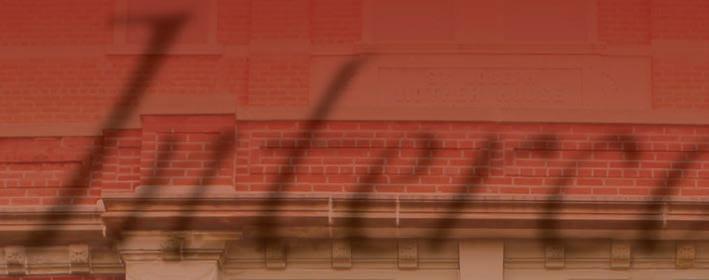



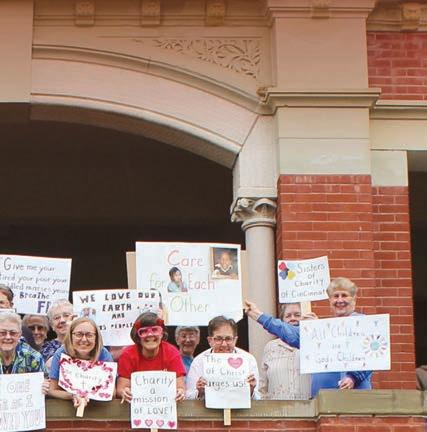
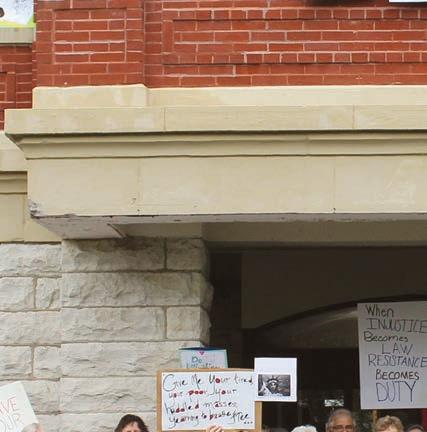
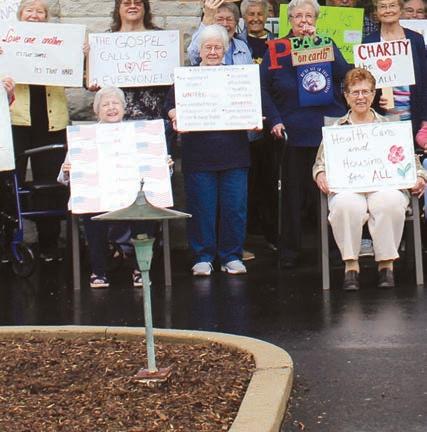

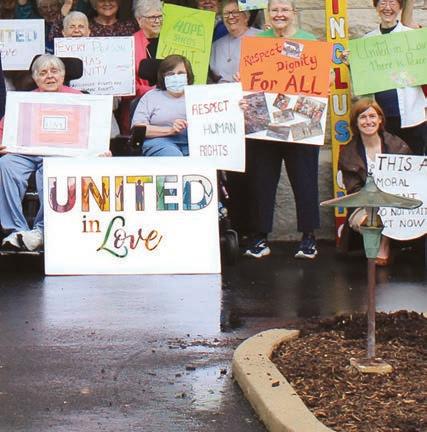

Spring/Summer
Volume I, 2025
Intercom, the official magazine of the Sisters of Charity of Cincinnati, is published twice yearly.
Editorial and Design Team
Erin Reder
Michelle Bley
S. Georgia Kitt
S. Barbara Hagedorn, Leadership liaison
The staff reserves the right to edit for space and readability. Please send address changes or any comments or questions you may have about the content of Intercom to:
Communications Office 5900 Delhi Road
Mount St. Joseph, OH 45051
Phone: 513-347-5447
Email: erin.reder@srcharitycinti.org
Subscriptions: $15 per year
The information contained in Intercom is intended for general information and educational purposes only. Opinions expressed herein are the views of individual authors and do not necessarily reflect the opinions or policies of the Sisters of Charity of Cincinnati.
Dear Sisters, Associates and Friends,
Not long ago, I watched a short video of our late Pope Francis re ecting on hope. He o ered several thoughts that caught my attention. He said, “ e future has a name and its name is Hope. … Hope is the virtue of a heart that does not lock itself in darkness … but is able to see a future. … Only a tiny icker of light that feeds on hope is enough to shatter the shield of darkness.”

is issue of Intercom is lled with stories of hope and being a light in the darkness – a highlight being the historic election and celebration of our new Holy Father, Pope Leo XIV, the rst American pope!
You will also nd inspiring accounts of Sisters and Associates reaching out with compassion, providing medical care, food, shelter, and other vital resources to those facing hardship. In addition, we share re ections of oncein-a-lifetime spiritual journeys experienced by our Sisters and Associates. Each one shares a story that deeply touched her soul.
ese and other articles remind us of our shared call to o er hope through our actions. How will we bring hope to a world that is su ering in so many ways? Let us take heart in the words of Pope Francis: “A single individual is enough for hope to exist and that individual can be you.”
Blessings,

S. Barbara Hagedorn, SC
Urged by the love of Christ and in the spirit of our founder, Elizabeth Ann Seton, we Sisters of Charity of Cincinnati strive to live Gospel values. We choose to act justly, to build loving relationships, to share our resources with those in need, and to care for all creation

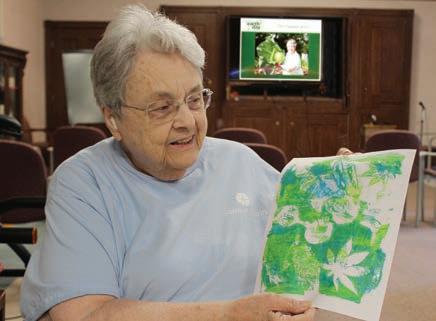


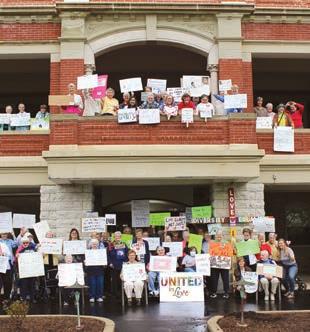
By S. Monica Gundler
In a powerful and prayerful assembly held in Rome, nearly 950 Sisters from across the globe gathered for the XXIII Plenary Assembly of the International Union of Superiors General (UISG). e theme, “Consecrated Life: A Hope at Transforms,” re ected the spirit of hope, unity, and renewal that permeated the week—from the solemnity of prayer to the joy of history unfolding before our eyes.

S. Mary Barron, OLA, president of UISG, welcomed the assembly, representing more than 589,000 women religious around the world. is assembly coincided with the conclave to elect our new pope, underscoring a moment of transition and re ection.


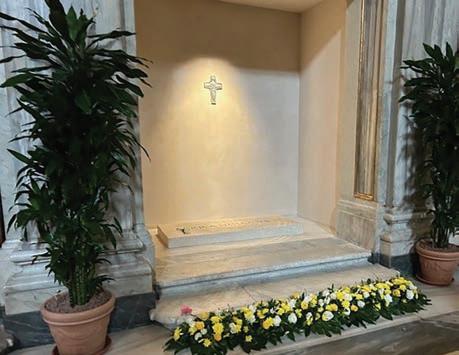
e theme emphasized the role of women religious as agents of hope and transformation in a world facing challenges such as war, migration, and climate change. Discussions also highlighted the importance of synodality, vulnerability, and the need for inclusive leadership within the Church.
S. Mary called upon attendees to continue Pope Francis’ vision of a Church that listens and serves, urging them to be “pilgrims of hope” in their ministries. e assembly also celebrated the 60th anniversary of UISG’s founding and the Jubilee Year, marking a signi cant milestone in the organization’s history.
A Global Gathering of Faith and Transformation roughout the week, the UISG assembly became a living witness to the theme it proclaimed. Sisters from every continent shared stories of courage, service, and profound hope amidst global instability. e assembly was not just a conference—it was a sacred space of encounter, discernment, and deep solidarity.
A highlight was the keynote by S. Simone Brambilla, MC, newly appointed prefect of the Dicastery for Institutes of Consecrated Life and Societies of Apostolic Life—the rst
woman to hold such a role in the Vatican. Her address, “How is Consecrated Life a Transforming Hope?” left the audience deeply moved. Drawing from Scripture, experience, and the prophetic witness of religious life, she o ered an image of religious as moonlight re ecting the light of Christ, shining in the darkness of today’s world.
She reminded us, in the words of poet Emily Dickinson, that, “Hope is the thing with feathers that perches in the soul,” and invited us to be that hope in a world marred by war, displacement, injustice, and ecological collapse.
“We are called to be women of Easter in a world of Good Fridays,” she said—a phrase repeated often in the days that followed.
e Leadership of the UISG outlined:
• ere are 45 armed con icts in Africa, 21 in Asia, and seven in Europe.
•One percent of the population controls 50 percent of global wealth.
•More than 60 million women and children are vulnerable to human tra cking.
•Our world su ers from the “diseases” of individualism, nationalism, and consumerism, all underpinned by an economy that prioritizes wealth over people.
In the face of these realities, the witness of women religious becomes even more vital. Conversations ranged from care for elderly Sisters, to advocacy for migrants, to protection of the Earth, and support for victims of tra cking.
ese ministries represent a powerful web of hope and healing across the world.
As the conclave began on Wednesday, we gathered in a prayer of invocation to the Holy Spirit. e chant “Veni Sancte Spiritus” rose in harmony across the room.
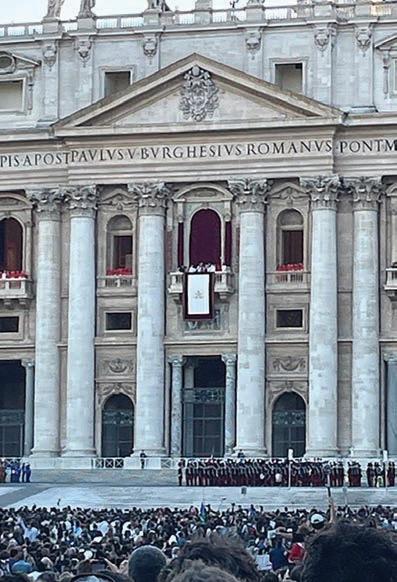

Our English-speaking table brought together Sisters from India, the Philippines, Nigeria, Kenya, Ghana, and the United States, forming a tapestry of cultural richness and shared purpose.
e Sisters of Charity Federation gathered for dinner on Wednesday evening. We were joined by nine Sisters from New York, New Jersey, Halifax, Nazareth, Leavenworth, Antigonish, St. John (New Brunswick), and Seton Hill.

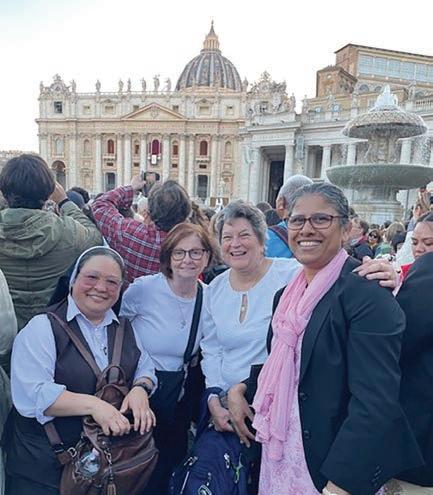

And then, on ursday afternoon, just after Communion during Mass, word spread quickly—white smoke was billowing from the Sistine Chapel. A handful of Sisters—Maria Sheila Undang, O.Carm., Mary Catherine Redmond, PBVM, Jackulin Jesu, SCN, and myself—dashed into what became our “Amazing Race” to St. Peter’s Square.
Dodging tra c, agging down a cab, running the nal stretch with the crowd swelling around us, we nally arrived at security and rushed through—just in time to witness the moment. We saw movement on the balcony.
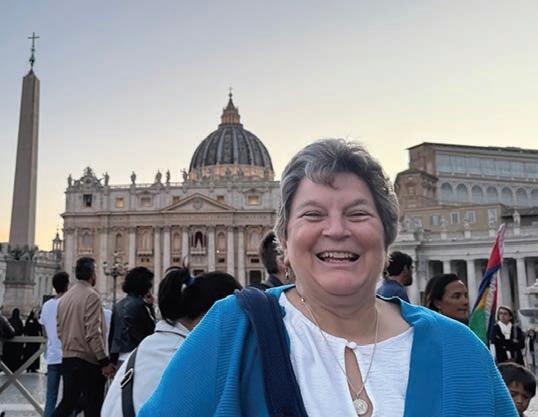
en came the announcement: Cardinal Robert Prevost, now Pope Leo XIV—and the roar of the crowd erupted. As tears owed and voices rose in song and joy, S. Sheila received a call from one of her 88-year-old Sisters exclaiming, “He’s an American!” We laughed, cried, and gave thanks for being present at this historic moment.
In a world lled with complexity and pain, this gathering was a vivid reminder that consecrated life is not only relevant—it is radiant. As religious women, we are called to re ect the light of Christ, to be a presence of compassion and resilience in dark times.
To quote a line shared during the assembly: “Sometimes it is necessary to reteach a thing its loveliness until it owers again.” Indeed, we witnessed hope blossoming—not only in speeches or liturgies, but also in shared meals, late-night conversations, songs, and silent prayer.
We are women of Easter. And we will carry this light into the world.

“As we gather today as Sisters of Charity and Associates, we lift our prayers and our actions to our loving God, who calls us to heal the broken, welcome the stranger, feed the hungry, and dare to risk a caring response ... Together, may we build a world where we are United in Love.”
On a gray and drizzly afternoon on April 25, 2025, a quiet but powerful witness of unity, love, and compassion unfolded on the Motherhouse grounds of the Sisters of Charity of Cincinnati. Despite the weather, Sisters and Associates gathered in various locations on campus— holding signs, lifting hearts, and standing together in a powerful expression of their Gospel-rooted commitment to justice, human dignity and compassionate love.
e United In Love initiative was a call to stand visibly and intentionally in solidarity with those seeking a more just and inclusive world. At a time when division and fear so often dominate public discourse, this simple but heartfelt action a rmed what the Charity Family stands for: dignity for all, care for creation, peace over violence, and love over indi erence.
Handmade signs carried messages such as “Lead With Love,” “Peace Begins With Us,” and “All Are Welcome.” Modest in size and scale, the gathering radiated a spirit of deep conviction.

























































ough the event at the Motherhouse was the central gathering, the United in Love initiative extended beyond Mount St. Joseph. e Sisters of Charity of Cincinnati invited other religious congregations—including members of the SC Federation—and ministry partners to join them. Several responded to the call. In April, the Sisters of the Precious Blood in Dayton, Ohio, held their own communal witness in solidarity. Jen Morin-Williamson, peace, justice, and ecology coordinator for the community, re ected: “In these tumultuous times, our most fervent prayer is that elected o cials at every level of government will represent all people — upholding human dignity, working for the common good, and defending the foundations of our democracy, as generations before them have done.”
Whether standing on street corners or gathered quietly in sacred spaces, each act of participation re ected the unifying spirit of the initiative: a desire to proclaim, through presence and prayer, that love and justice still matter.
e Sisters of Charity of Cincinnati encourage continued re ection and action. As the prayer for the day reminds us, we are called “to heal the broken, welcome the stranger, feed the hungry, and dare to risk a caring response.” e United in Love initiative was one such response—an outward sign of the inward commitment that has shaped the lives and ministries of Sisters and Associates. Rooted in faith and lived through action, this witness calls us still: to keep building a world where love leads, justice is possible, and all are welcome. May we carry this spirit forward— together, and always, united in love.
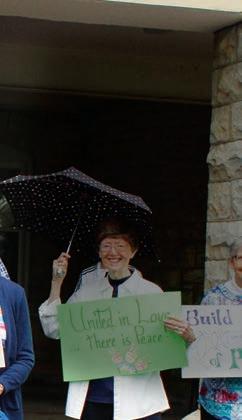











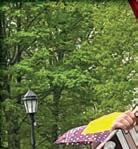
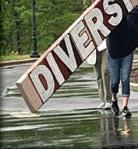








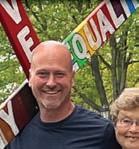


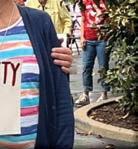







































By S. Mary Ann Flannery
It’s no exaggeration to note that many people are aware of the decrease in the number of women religious serving in what was once a vibrant, critical mass of ministries – education, healthcare, and social work – throughout the world. Some lament the decline. Others are curious as to why it is happening. But everyone, in one way or another, is a ected. Even among women religious, the sharp and steady drop in numbers feels puzzling at times.
But not to S. Marge Kloos.
“ e Spirit is doing something new— and we are ushering in the rst blessings of a new era of religious life. It’s a creative and hopeful time, albeit a little messy sometimes,” she said.
Since completing her term on the Sisters of Charity of Cincinnati Leadership Team in 2023, Sister has been ministering as a facilitator, guiding other congregations of women religious through assemblies, Chapters, governance decisions, and emergent planning processes.

In 2016, S. Marge came to this ministry in an unexpected way. She was invited to participate in a facilitation training program with Sisters Rose Dowling, FSM, and Mary Jordan, FMSA, in St. Louis. “Initially, I wanted to learn so I could better facilitate situations and initiatives for my Community,” she recalled. “I was eager to learn from Mary and Rose. As a bonus, some in the group had been friends for years.” S. Marge soon learned that trained facilitators were harder to nd, just as needs were exponentially growing. Leaders began calling to see if she could be available to work with them.
“Midway through my second leadership term I received a request to facilitate for a community’s Chapter and election,” she recalls. “ e provincial knew I would be ‘learning by doing.’ She and the two co-chairs of the planning committee were a great help. We managed to deal with the challenges of the COVID-19 pandemic and gured out how to have an inperson Chapter.”

By the end of 2023, she was working with multiple communities. ese experiences, she said, have deepened her sense of call to facilitate full time. e part of this ministry S. Marge nds most encouraging is that congregations are addressing these opportunities and challenges together, in collaboration with one another across charisms. “All is leading to a viable and di erent religious life,” she says.
One unique request came when nine communities asked her to facilitate for them as they developed a shared governance structure. “Leaders are becoming scarce in communities because of capacity and demographic realities,” she explained. As these communities see it, this way of doing governance will also bene t younger members. For these congregations, who share so much in common, helping one another with governance makes great sense.”
S. Marge facilitates for communities as they enter into conversations that lead to other kinds of major changes as well. Processes are unique to each community, taking into consideration their demographics, canonical and civil responsibilities, and the needs of Sisters. All of this work is

about ensuring the congregation’s ongoing well-being through responsible planning with lots of community input. “It’s all about patient listening and focused action,” says S. Marge.
Increasingly communities are engaging professional lay leaders who exercise authority for properties, nances of a community, and in some cases oversee the care of Sisters. She often invites planning groups to consider: What do we need? Who needs to do it?
S. Marge points out that at her rst Leadership Conference of Women Religious (LCWR) meeting in 2015, about 500 members attended. For the most part, all were religious superiors. Since then, LCWR has invited lay colleagues responsible for nance, property management, administration, and mission integration alongside elected leaders whose focus remains pastoral care for their members. “ e tent is widening, things are changing—and the graces are signi cant, as are the shifting relationships,” she says.
Dealing with what some might call negative realities, S. Marge sees things di erently. “It’s like when a person comes to a midlife crisis and asks what is my essence of being? We are in that clarifying moment of midlife. We are nding and nurturing the essence. Sisters are striving for the common
good and demonstrate—without always realizing it—how God continues to feed us, to embrace our human situation.” is journey, she explains, is about letting go of what we once owned and cherished. “ is is anathema to the world,” she says. Yet, she believes that religious life today is living out the vision of Vatican II: shedding the remnants of a medieval structure in favor of a renewed presence in a world longing for meaning, charity and mercy. Something new is taking root –new ways of serving, of living, of being together.
S. Marge sees that vision unfolding. She believes this moment is drawing religious communities closer together in a shared charism that meets today’s needs. “It’s exciting to witness the collaboration and intercommunity companioning,” she says. “We are transforming for a shared future and a global sisterhood.”
“I am profoundly moved by Sisters who say things like, ‘We have to live our lives robustly right now. Our life is a witness.’”
S. Marge feels her own spiritual life is being transformed into something larger than herself and her own world. “ e Sisters I engage with in this ministry are gifting me,” she says.
In her 2024 LCWR presidential address, S. Maureen Geary, OP, stated, “Our time horizon requires the investment of our very selves, and our goal is the life of the world.”
S. Marge says, “ is perspective and purpose resonate with me!”
Although she had planned to take a sabbatical following her leadership term, those plans were quickly put on hold when she responded to the rst call for help. e sabbatical still waits, but S. Marge is in no hurry. She continues to teach a class in Catholic Social Teaching at Mount St. Joseph University. “It keeps me grounded and connected,” she says. “Young people are key to sustaining a vibrant world into the future. Together, we raise a lot to think about and work toward.”
Indeed, S. Marge Kloos appears to be exactly where she’s meant to be—in the right place, at the right time.
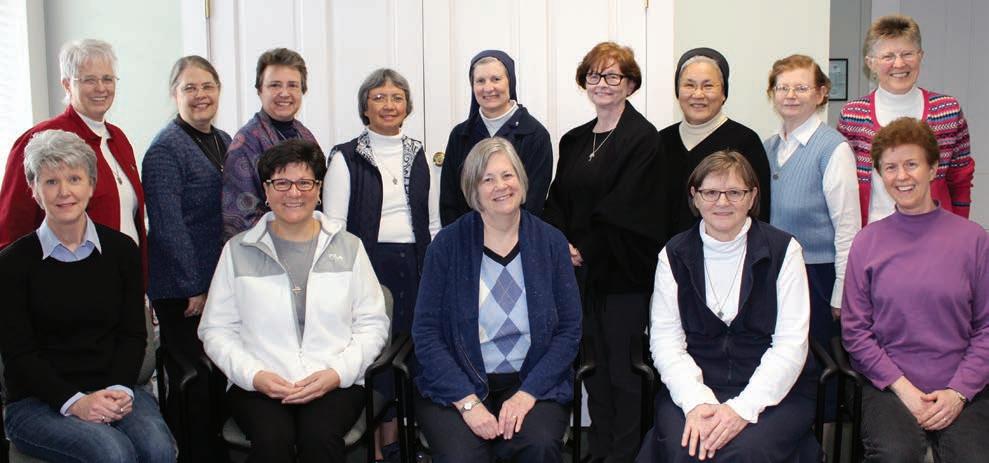
Participants in a 2018 facilitation group gather for collaborative planning and discernment. S. Marge Kloos (front row, center) has worked with groups like these to guide religious congregations through Chapter processes, governance transitions, and visioning for the future.
By S. Patricia Wittberg
Religious life has been an essential part of the Church for more than 1,500 years, often attracting thousands of persons wanting to enter it. For almost that long, therefore, religious communities have required an initiation period for those who desired to join them: a time when the community and the new entrant could discern whether she or he really had a vocation. e Church con rmed the importance of this practice by mandating the novitiate year in Canon Law for all of the many varieties of religious orders, congregations, and societies of apostolic life that arose throughout the ages.
e canonical novitiate seemed quite mysterious to outsiders prior to the Second Vatican Council. Even in active apostolic teaching or nursing congregations, novices were isolated from their families, friends and the secular world in general for an entire year. What were they doing during that time: praying 24/7, studying scripture and theology, washing the Motherhouse laundry? In those days, only the religious themselves knew what their novitiate was like.
e reforms of Vatican II brought many changes in religious life, including in the novitiate. Now even some religious – especially those who were novices themselves before 1970 – may wonder what the novitiate is like today. So we asked S. Karina Montes-Ayala, who recently concluded her canonical novitiate year, to describe what the experience was like.
S. Karina recently participated in the InterCongregational Collaborative Novitiate (ICCN), a nine-month program in Chicago, Illinois, that began last Aug. 30 and ended in early June. is year, there were six women in the program, spanning ve di erent congregations and four di erent cultures: Saima and Shaista, two Loretto Sisters from Pakistan; eresa, a Good Shepherd Sister from Vietnam; Jamie, a Dominican Sister from Adrian, Michigan; Janice, a Franciscan Sister from Ti n, Ohio; and Karina, a MexicanAmerican from Cincinnati. All lived together in a multi-story apartment with their two directors, Sisters Nancy Gerth, SCN, and Corrina omas, FSPA. S. Karina considered the experience of living in this intercultural and intergenerational community to be one of the greatest gifts of the program.
What activities lled the novices days and weeks? Each day was di erent. On Mondays, S. Karina and the other novices attended a class at the Chicago eological Union. is past semester, their class was “Trinity in Mission.” ey

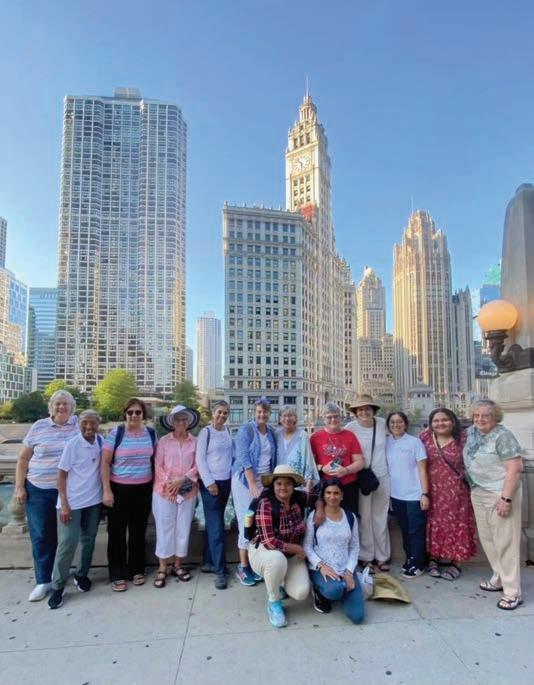
also participated in various workshops in Racine, Wisconsin. On alternate Tuesdays, their directors led a class on topics such as Vatican II, prayer and the vows. On the other Tuesdays, S. Karina joined a Zoom class with Cincinnati Sisters Judith Metz and Lois Jean Goettke on various aspects of her Community’s history. At one point, she was learning with them about the Community’s history of nursing and teaching.
Wednesdays were ministry days. S. Karina used her Spanish to teach English as a Second Language. Last semester she had ve students; during her second semester, she worked with a single family. For the parents, she said, it mostly involved listening and accompanying them as they adjusted to life in the United States. She helped their two children on the weekends with ESL and tutoring. Sister also volunteered at Kolbe House, run by the Archdiocese of Chicago, which


serves individuals and families a ected by the criminal justice system. ere, she supported persons released from prison in their re-entry into society, getting them shoes, clothing, bus passes, and other necessities.
ursdays were the novices’ re ection days, an entire day devoted to prayer, taking walks, and reading. Each novice had a one-on-one session with one of the two directors, and once a month there was a three-way meeting between Sisters Nancy, Lois Jean, and Karina.
On Fridays, the six novices in the ICCN program joined novices from other local novitiate programs for a shared class. Together, they participated in workshops on topics such as intergenerational living, the vows, Vatican II, synodality, and mission, as well as emotional intelligence and addictions.

Saturdays were set aside for chores – cleaning the apartment, grocery shopping, etc. Each Sister took turns cooking, and S. Karina said they enjoyed wonderful meals featuring each culture’s cuisine! She noted that Mexicans and Pakistanis share a love for spicy dishes.
Each day ended with evening prayer in chapel. On Sundays, they went to Mass at di erent parishes around Chicago. S. Karina said they participated in liturgies in Spanish, Chinese, and Ukranian, in addition to English Masses in various parishes.
When asked what she particularly appreciated about her canonical novitiate experience, S. Karina said that one of the greatest gifts was living together in an intercultural community – learning how to be present for one other and to

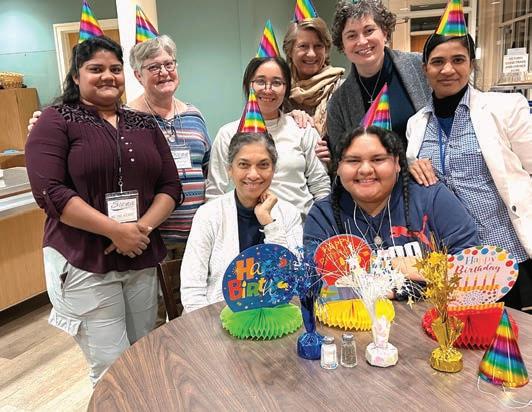

support each other. She also expressed how much she gained from the various courses, and felt that the holistic nature of the novitiate encouraged the growth of each novice’s spiritual life. e program allowed the novices to walk together through the formation process, rather than alone. ey became aware of the gifts of each congregation’s charism and deepened their appreciation for their own.
S. Karina’s time in the ICCN has drawn to a close. She shared that she would miss her friends but felt grounded by her past experiences living in local communities: Visitation House in Cincinnati, Casa de Caridad in Anthony, New Mexico, St. Joseph House close to the Motherhouse, and most recently in Chicago. A Sister once gave her the advice that “anywhere you go you will be at home if you have a home in God” – advice that stayed with her. S. Karina also nds resonance in the quote from Richard Rohr: “Love is where you come from and love is where you’re going.”
By Angela Anno, Associate















IIn the midst of a busy life of ministry last fall, Associate S. Karen Elliott, C.PP.S, felt a quiet invitation from God— to pause, pray more deeply, and enter a time of spiritual discernment. Walking a portion of the Camino de Santiago in Spain became the sacred space where that invitation was answered.
“It was an experience of deep intimacy with God,” she said. “I became aware of God in a bud bursting forth from the earth, the picturesque landscapes, the warmth of the sun, the cooling breeze, even the pouring rain. I found myself delighting in the experience of what each day brought. I could feel the energy of all the people who had walked before me and with me … I almost don’t have words to explain its depth.”
Together with her friend, S. Margo—also a Precious Blood Sister—they started each day around 7 a.m. with breakfast and let God unfold the day for them. “We didn’t push ourselves,” she said. “ is gave us freedom to be present to the day. We went on God’s time. It allowed us to live in the moment and the experience.”
ough pilgrims came from many countries and faith traditions, a sense of unity emerged along the way. “It was like a United Nations of Spirituality,” S. Karen said. “We walked alone or with those we met along the way, o ering
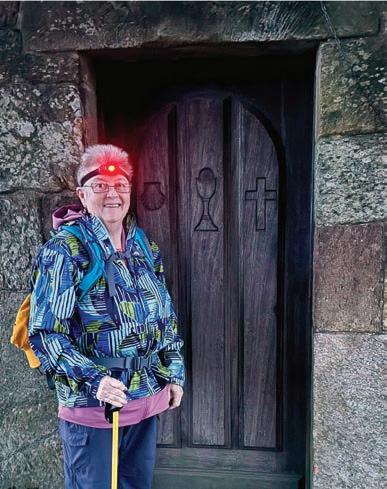

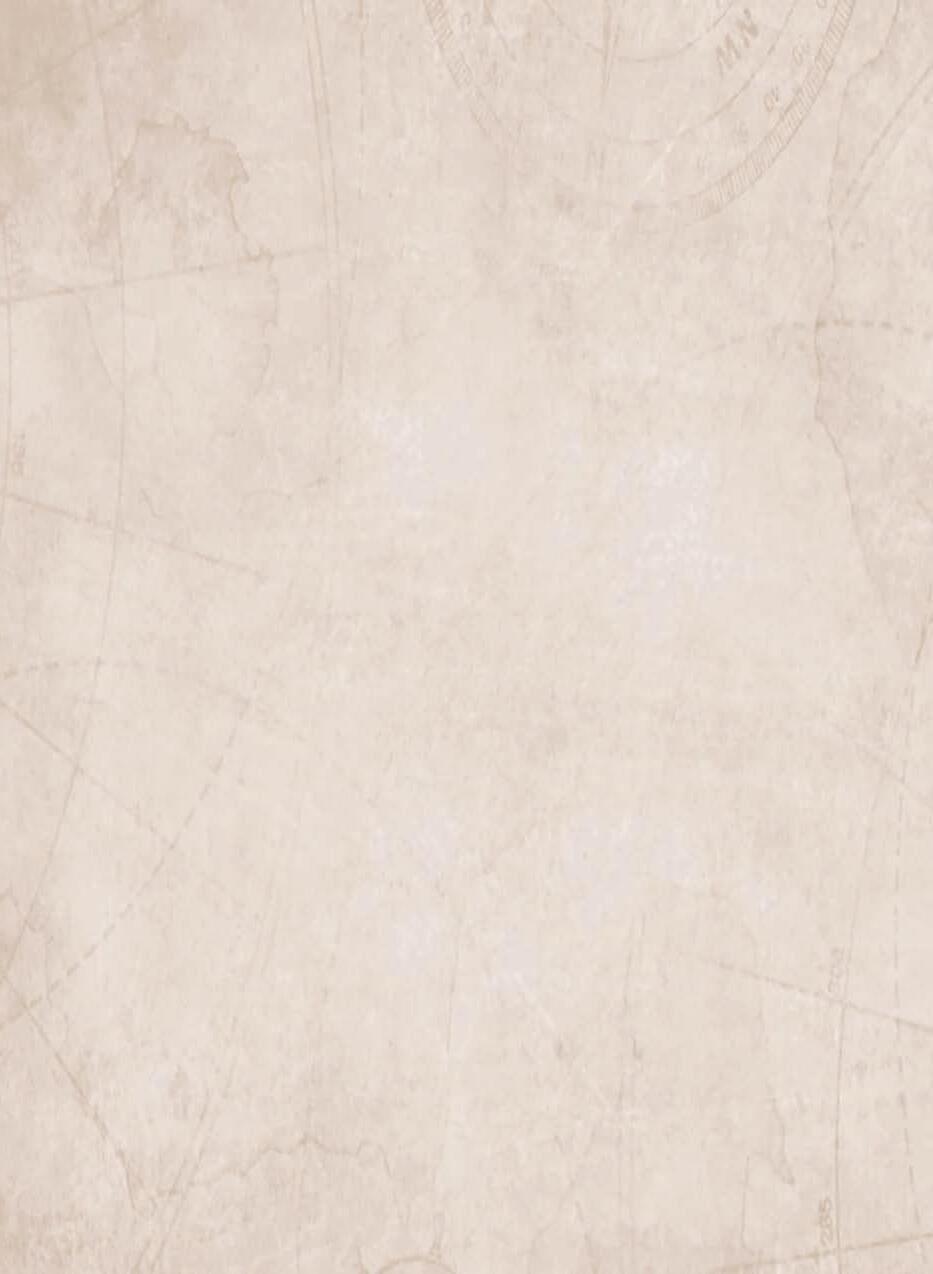



help when we could.” She herself received such kindness during a downpour when her shoes fell apart. “A woman we didn’t know stopped and wrapped my shoe with tape so I could continue. Acts of kindness like that were common. ankfully, I had brought another pair for the rest of the journey.”
A highlight of the Camino experience was being able to o er a reading at the Sunday Mass at the Cathedral of St. James – before a crowd of more than 3,000 people. “It was a profoundly meaningful experience. I have no words for it,” she said.
She brings the fruits of the experience back to her ministries and to her involvement as an Associate of the Sisters of Charity. S. Karen sees God’s hand at work leading her to close involvement with the Sisters of Charity while remaining committed to her vocation as a Sister of the Precious Blood.
A native of Dayton, Ohio, S. Karen is the only girl in a family of four children. Her parents’ deep and active faith left a lasting impression on her. “It wasn’t just about taking us to Mass,” she recalled. “ ey lived their faith in everyday






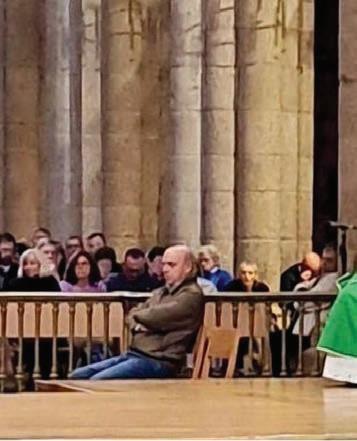
interactions with others.” ey instilled in her the values of integrity and social justice. Her father once took her to hear Dr. Martin Luther King Jr. speak, telling her that King would one day be recognized as a great American. When John F. Kennedy was elected president, a young Karen experienced the sting of prejudice while visiting a friend whose family was Methodist. e mother told her, “I don’t like Catholics. Go home.” Hurt and confused, she turned to her mother, who gently explained, “Prejudice is being down on what you’re not up on.” Her parents quietly and consistently showed her the way.






After college—where she excelled in both academics and athletics —S. Karen felt the call to religious life. She chose the Sisters of the Precious Blood for their wide-ranging ministries and focus on spirituality and presence. It was during her intercommunity novitiate, held in part at the Sisters of Charity Motherhouse, that she rst encountered the SC Community.






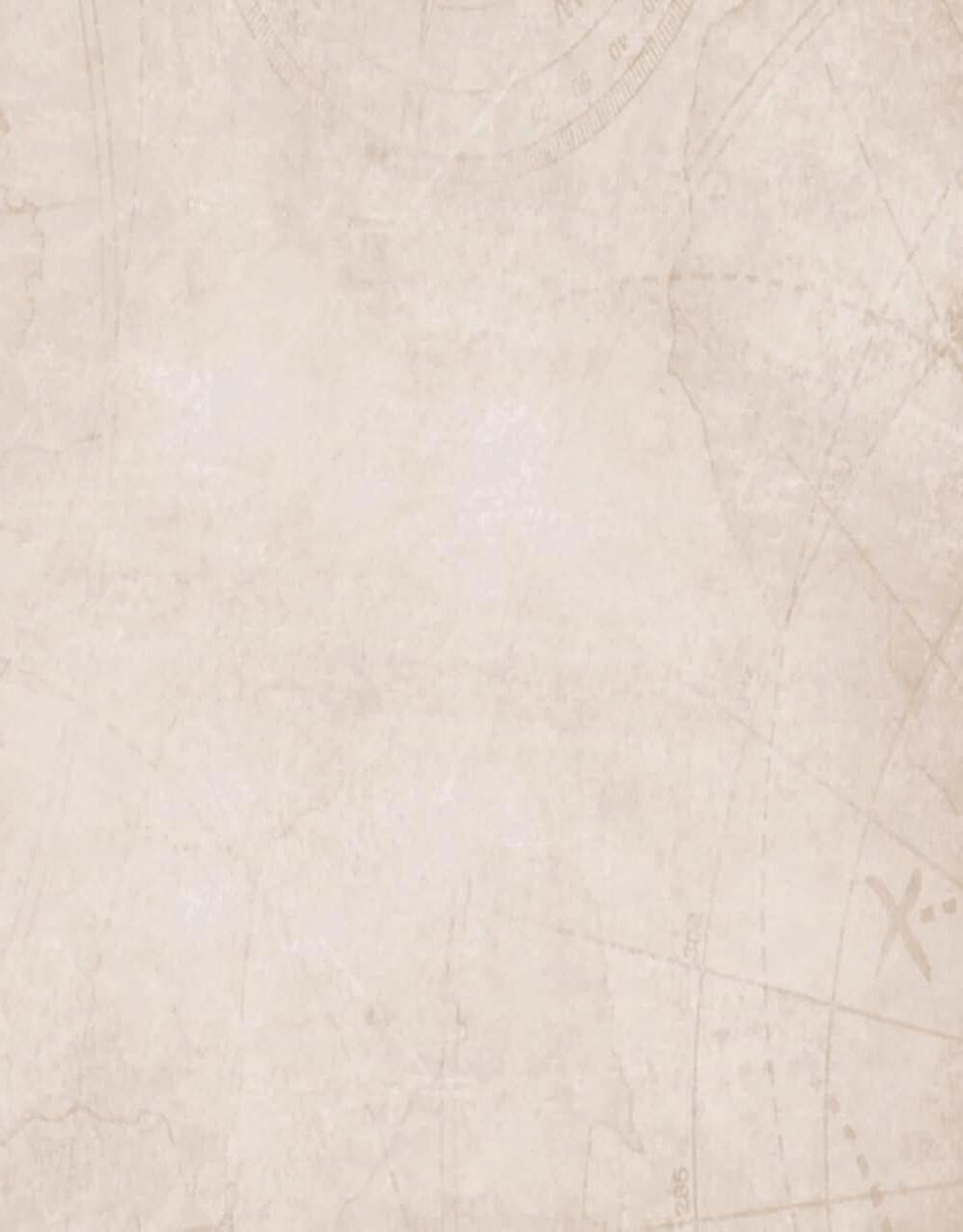


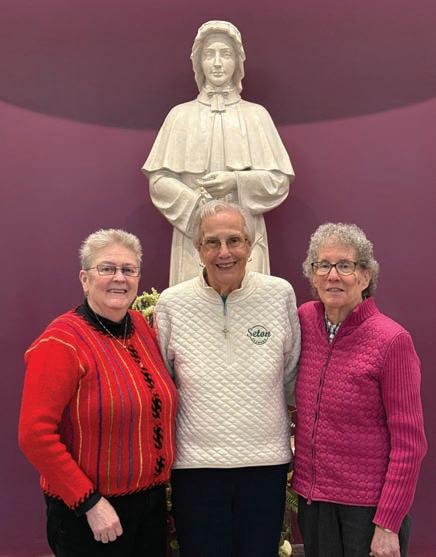




roles: teacher, junior high and campus youth minister, director of religious education, athletic director, and instructor of lay ministry and diaconate formation for the Diocese of Toledo.




Following her profession of vows and the completion of a doctorate in theology, S. Karen served in numerous
God reconnected her with the Sisters of Charity in 1982, when S. Barbara Davis invited her to teach at St. Michael in Findlay, Ohio. e two have been companions in mission ever since, each living out their unique congregational charisms. For S. Karen, being both a Precious Blood Sister and an SC Associate has been a source of spiritual richness.


Today, S. Karen is discerning her lifetime commitment as an Associate. She’s holds a deep love for Mother Seton and a deep admiration for Mother Margaret George, and she is now accompanying two women on their journey to becoming Associates.
Where will God lead her next? S. Karen is at peace, trusting God to reveal the next faithful step in her journey.

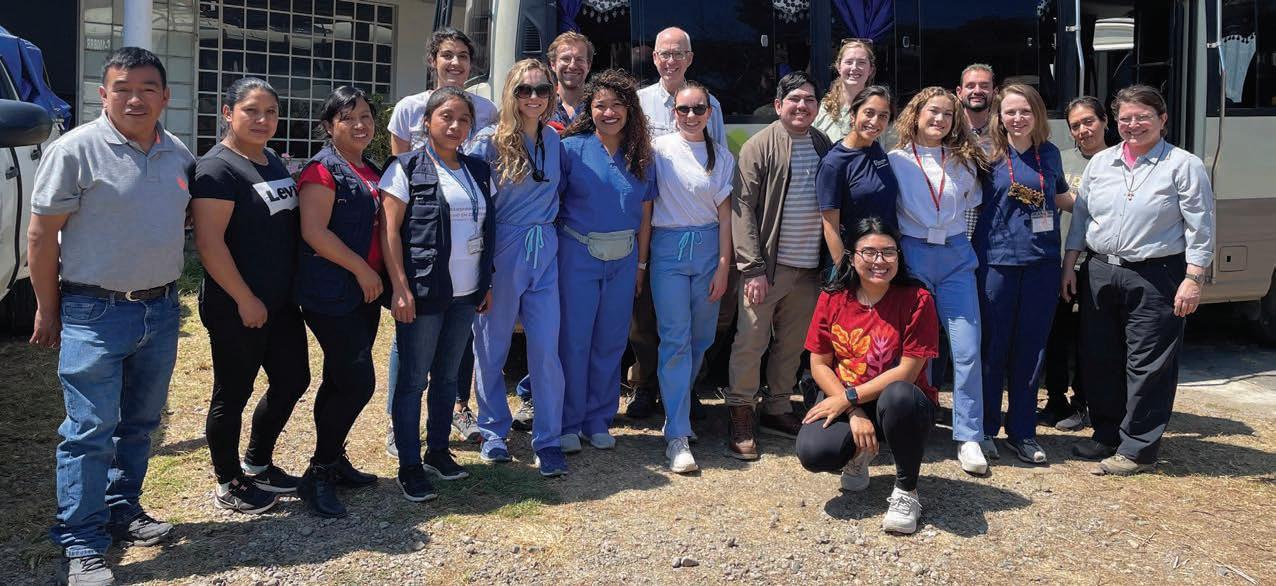
By S. Regina Kusnir
The view is breathtaking. e destination is remote. e language is foreign, as there are 32. e people are poor and lack services we take for granted. e challenges to bring health care to the people are many. e rewards of the medical mission trips are profound.
S. Montiel Rosenthal, SC, MD, has traveled to Guatemala 10 times – three in the past year – serving as the supervising physician for teams of residents, medical students and volunteers. Each trip is a touching and often sacred experience for those who go to serve. e goal of these trips is two-fold: to provide medical care to Mayan communities in the highlands with limited access to healthcare, and to model culturally respectful service for the next generation of physicians.
e teams work in collaboration with Wuqu Kawoq (Mayan Health Alliance), a non-governmental organization founded by a former Cincinnatian, Anne Kraemer Diaz. Wuqu Kawoq partners with local communities to provide healthcare, implement nutrition programs for children, empower women through artisanal textile work, and help preserve Indigenous languages. e trips are under the auspices of the Guatemala Ministry of Health Care.
e healthcare system in the U.S. relies on knowledge, skill and e ciency, addressing needs with an economy of time. In the villages of Guatemala, however, healthcare requires not only knowledge and skill but also compassion, a slower pace, and creativity to meet patients’ needs e ectively.
e language in Chichimuch is Quiche’ while the healthcare language in Guatemala is Spanish. To
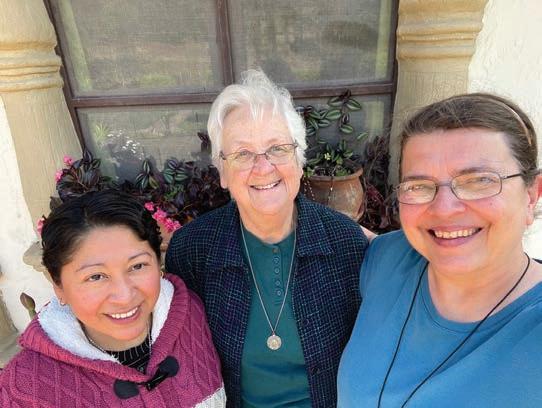
communicate with patients, the team relies on translators. e process slows everything down as Quiche’ is translated to Spanish, then Spanish to English, and vice versa for every aspect of a patient’s care. e team learns to change pace and hone attentive listening skills.
On one occasion, S. Montiel heard a mother sobbing. She asked a pharmacy student what caused the tears, but the student didn’t know. Taking the time to understand her emotional intensity, S. Montiel found that this was the rst time the mother understood, in her own language, how to properly administer the medicine her children needed. ey were tears of gratitude and relief.
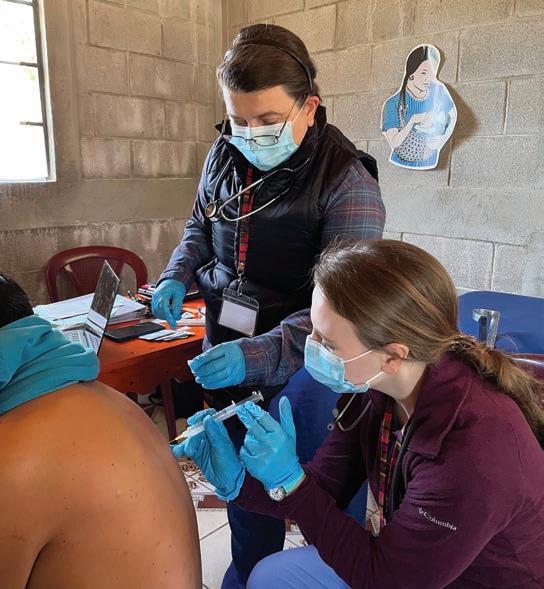
Working in remote areas often means facing a lack of resources. A preferred drug may need to be substituted. e way things would be done at home need to be adapted to the local situation. Long-term needs are hard to manage without readily available follow-up care. ere is so much more to be done beyond the two-week trips. For S. Montiel and her team, the opportunity to return, check on patients’ progress, and build lasting relationships is a source of deep gratitude.
S. Montiel values the mission trips. She believes that healthcare is a basic human right. e Mayans, who they care for, have long been an oppressed people in their country. Service to them gives hope and light. While S. Montiel and her team bring their medical knowledge and skills, they in turn witness profound resilience, deep faith, and heartfelt gratitude from the people they serve. ese trips show the team what service means.
S. Montiel encourages her students to think both inside and outside of the box if they want to be e ective. ey quickly learn that something as simple as drinking local water—or consuming ice cubes or market fruit—can lead to unexpected consequences.
She re ects, “If I bring my genuine self to the person in front of me, there is nothing more powerful than truly being listened to.” is is true both ways.
One of the most meaningful aspects of the trips is earning the respect of the people they help. S. Montiel loves
invitations to patients’ homes – where families proudly share their farms, their homes, and their heritage. ese visits reveal a culture that dates back centuries as well as the realities of malnutrition that a ect much of the population.
S. Montiel is grateful for residency programs that support a global dimension for students. Some students are inspired to dedicate a year of service; others choose to return on future trips. And, as they round out the trip, she asks them, “What does this call forth from you?” She sees the wheels turning.
S. Montiel has witnessed how these mission experiences transform residents and volunteers. Encouraged to be “curious in love,” they gradually adapt to the change of pace, learning to be present in the moment and to o er the very best of themselves. In that space hearts are touched – and often, patients open up to share far more than the immediate medical concern. In those moments, she says, “we meet heart to heart.”
It echoes the encounter in the Gospel, when Jesus asks, “What do you want me to do for you?” ey respond, “Lord, open our eyes.” “Moved with compassion, Jesus touched their eyes, and immediately they could see” Mk. 20:32.
Author’s Note: S. Montiel is a family physician at e Christ Hospital and a clinical professor in the University of Cincinnati Department of Family and Community Medicine where she serves as residency faculty. She is a member of the Sisters of Charity Leadership Team.

By Mackenzie Doyle, justice promoter
In March 2025, I attended the Justice Conference of Women Religious in Columbus, Ohio, where I had the opportunity to gather with justice promoters from across the country. e conference focused on how we can live out the integral ecology that the late Pope Francis called for in his encyclical, Laudato Si’, written 10 years ago this past May.

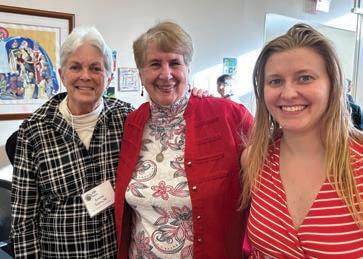
During the nal keynote, Marianne Comfort of the Sisters of Mercy Justice Team shared three essential components of justice work. ough directed at justice promoters, I believe these are valuable insights for all of us who care about justice in our current context in the U.S.
Drawing on Joanna Macy’s e Work that Reconnects, which addresses the climate crisis, Marianne encouraged us to consider how we might participate in what Macy calls e Great Turning – an essential shift to a life-sustaining society, in contrast to the ‘Business as Usual’ narrative that upholds colonialist-capitalist systems that exploit both people and our planet.
But how do we move toward e Great Turning, especially when Business as Usual is causing more destruction today? For those of us who envision a radically di erent world, the continued harm caused by Business as Usual can be harmful and lead to despair. at’s why Marianne emphasized three interrelated dimensions that help e Great Turning emerge.
e rst is resistance, or as Macy calls it, holding actions in defense of life. is is the kind of justice work many of us know well: calling legislators, protesting, boycotts, and engaging in civil disobedience. ese actions aim to reduce the damage being done by Business as Usual and protect what we still have – Medicaid, SNAP, national parks and public lands, public schools, libraries, and more. While essential, resistance alone is not enough to bring about e Great Turning.
e second dimension is creating life-sustaining systems – or in Macy’s terms, transforming the foundations of our common life. is means developing viable alternatives that support the Earth and all people outside of the Business as Usual model. is brings to mind Catholic Worker Houses and Dorothy Day’s motto “building the new world in the
shell of the old.” Examples include community-supported agriculture, indigenous farming practices, eco-villages, communal housing, nonviolence, and restorative justice circles. In our Gospels, Jesus called his disciples to a radically new way of life through the Beatitudes. e early Christian community practiced “politics” by discerning together how to live justly in community (see Acts 2:42–47). Yet for these new models to take root more widely, we also need the third dimension.
at third dimension is shifting consciousness –changing our perceptions and values. is is slow work. It involves storytelling, relationship building, and collaboration between theology and science to reveal our deep interconnectedness. When it comes to immigration, for example, this kind of transformation may feel too slow, but it is foundational if we hope to change the narrative and build an immigration system grounded in human dignity.
In my own work, I’m trying to nd opportunities to balance and contribute to all three dimensions. I encourage you to challenge yourselves to re ect on how you might do the same—individually, in groups, or within your community. When the work feels overwhelming, pause and ask yourself: Where do I want to put my energy? How can my e orts contribute to the emergence of e Great Turning?
Source: https://workthatreconnects.org/three-stories-of-our-times/

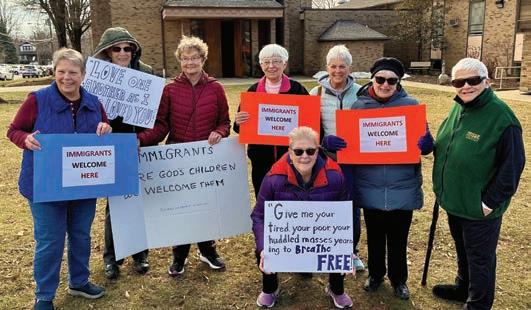
By S. Caroljean Willie

On the 10th anniversary of Laudato Si’: On Care for Our Common Home, the landmark encyclical by the late Pope Francis, we are once again invited to recognize the sacredness of the Earth and the interconnectedness of all life. Francis urged us to view creation with new eyes – to behold the beauty and wonder of plants, animals, people, rocks, mountains, and oceans as part of our shared home. is is a home that belongs to all of us–one that must be treasured and cared for with love. Yet, as he noted in the encyclical, we have forgotten how to love the Earth, and in doing so, we are destroying our common home through greed and thoughtlessness.
EarthConnection (EC) seeks to remind people of the beauty of creation through programs for children and adults of all ages. e facility itself provides a model by using both solar and geothermal energies as well as multiple recycled materials within the building.
Monthly webinars are designed to provide up-to-date information on climate change, the damage that is being caused as well as adaptation and mitigation e orts that are being taken to address the problems. Francis urged us to address our “sacred cows,” individualism, consumerism, capitalism, competition. He also reminded us that outward actions alone are not enough. What is needed is an inner transformation, an ecological conversion, which guides our outward actions.
EarthConnection o ers webinars that provide participants with tools for transformation and that inspire hope for a better future. Recent o erings have included: “Voices of Hope” and “Cranky Uncle vs. Climate Change” presented by S. Caroljean (Cj) Willie; “Transforming Ourselves to Transform the World” by S. Pat Bombard, BVM, director of Vincent on Leadership – e Hay Project at DePaul University; “Cultivating Botanical, Spiritual, and Creative Gardens: Wisdom for a Flourishing Future” by international artist and lmmaker Imogene Drummond; and “Climate Change and Immigration” by University of Dayton doctoral candidate Ti any Hunsinger.
Girl Scout troops continue to visit EC to learn about the gifts of God’s creation, the importance of environmental
sustainability, and practical ways they can care for Earth. Recently, troops from Milford, Anderson Township and Northern Kentucky visited.
EarthConnection hosted a special Earth Day program at the Motherhouse, highlighting recent sustainability initiatives and creative projects. Associate and EC Administrative Assistant Sue DiTullio highlighted numerous updates to the facility. ese included the planting of all native species, installation of a birdhouse equipped with a camera viewable through a smartphone app, creation of a new nature trail through the woods behind EC, and a vibrant mural painted on the EC wall facing the university parking lot (pictured above). Members of the Art Guild at Mount St. Joseph University designed and created the mural. ese and other innovations re ect EC’s ongoing commitment to environmental care and education.
S. Winnie Brubach and the “Garden Ladies” continue to work in the garden weekly. e raised beds and the pathways between the beds are weed free and the seeds planted are sprouting. Every year, volunteers plant a variety of vegetables and donate the harvest to clients of the Good Samaritan Free Health Center in Price Hill. S. Annie Klapheke, dietitian at the clinic, provides recipes for the clients on di erent ways to prepare the vegetables. e center told S. Winnie that since the produce arrives on Wednesday, it is the most popular day to request an appointment.
EC also provides programs o -site. S. Winnie and gardener June Greensmith gave a presentation to the Sayler Park Garden Club. ey spoke about EC, the beginnings of the garden and their plans for this year’s growing season.
S. Caroljean (Cj) Willie o ers monthly programs at Mother Margaret Hall and has presented both virtually and in person to a wide range of audiences. Her recent web presentations have been shared with organizations such as Sisters of Earth and Faith Communities Go Green. She has also given in-person presentations for the Franciscan Sisters of the Poor, the Spring eld (Ohio) Vincentian Volunteers, and Mount Auburn Presbyterian Church.


By S. Georgia Kitt

Franette Hyc has been led by God’s love throughout her life and rmly believes, “God puts me where I need to be.” She currently serves as coordinator of Residential Life Services (independent living) at the Sisters of Charity Motherhouse. Her previous ministry experiences led her to take on this role in 2017. A native of Chicago, she transferred to the Sisters of Charity from the Franciscan Sisters of Our Lady of Perpetual Help in St. Louis in 1991. is summer, she celebrates her diamond jubilee as a vowed woman religious. Earlier in her ministry, S. Franette served in healthcare as a registered nurse and later as an administrator in a rehabilitation hospital and long-term care facility in Green Springs, near Toledo, Ohio.
While attending Xavier University in 1985, S. Franette experienced the hospitality of the Sisters of Charity through Sisters Mildred Inkrot, Alice Mary Roddy, Marge McCullough, Redempta Wittberg, and Helen Fox. She lived with them at St. Matthew in Norwood for a year and a half, during which she said, “I experienced the spirit and openness of the Community through these dedicated, committed women.” While earning a master’s degree in hospital and health care administration, she joined in Community events at the Motherhouse. Later, while living in La Crosse, Wisconsin, she felt a deep connection to St. Elizabeth Seton as well as St. Louise de Marillac— the namesake of her alma mater—who, with St. Vincent de Paul, founded the Daughters of Charity. “All Charity saints!” she noted. Feeling drawn to the SC charism, S. Franette began the process of transferring her vows in 1989. With the support of Sisters Mary Jo Gasdorf and Mary Ellen Cahall, her transfer to the Sisters of Charity was complete in April 1991.
As a Sister of Charity, S. Franette continued her ministry in healthcare. After serving as a nursing home administrator at St. eresa Home in Cincinnati, she ministered in hospice care, particularly with the Red Ribbon Team for persons living with AIDS. e mid-1990s were a painful time—many patients were dying, often marginalized and alone. Early on, only comfort care was available, until trial medications and home-based HIV infusions began o ering new hope.
Most of S. Franette’s patients were gay and many were not welcomed in their churches or by their families. She shared, “ e challenge was the risk that my patients would assume I was judgmental because I was a Sister. At rst, I was


just ‘Fran.’ Over time, they came to know I was a Sister— but I remained simply Fran. ere was never a question of acceptance.” She emphasized that being open and accepting was central to her ministry: “My clients knew I truly cared. ey were gifts to me.”
Eventually S. Franette became a research nurse at the University of Cincinnati AIDS Clinical Trials Unit, where she supported patients participating in studies for new HIV medications – o ering hope and healing to many. “More than 40 years later, thanks to ongoing research, people with HIV can now live normal lives—as it has become a manageable chronic condition,” says S. Franette.
S. Franette sees strong parallels between her past ministries and her current role. As coordinator of independent living at the Sisters of Charity Motherhouse, she nds the ministry deeply life-giving and personal. Her greatest hope is that


Sisters know she is present, available, and ready to assist when needed.
She has long felt called to work directly with senior Sisters. Supporting a Sister through change begins with meeting her where she is—o ering compassion, understanding, and a non-judgmental presence. She helps each Sister navigate available resources and connections, often consulting with professionals when additional support is needed. is ministry of presence—simply being with each Sister—fosters a positive and individualized transition into Motherhouse living.
For those beginning to consider a move to the Motherhouse, S. Franette has developed a thoughtful and welcoming process. She collaborates closely with Rebecca Barron, RN, associate health and wellness leader, who meets with each Sister to assess her readiness for independent living. Sisters are invited to tour available rooms and can hold a space for up to three months while discerning their decision.
Considerations often
include proximity to elevators, the chapel, and dining areas.
Each new resident is paired with a Sister companion in her living area to answer questions and ease the transition. A Motherhouse handbook o ers further guidance. Many Sisters moving in continue active ministries or volunteer on campus or in the local community—opportunities that are always encouraged and welcomed.
Additional supports include medication assistance through the Clinic, tness training, accommodations for special dietary needs, and access to Motherhouse transportation services. Sisters typically move from local communities, apartments, or family homes. S. Franette encourages each one to take time for discernment, re ect on personal preferences and needs, and feel free to ask questions along the way.
Her guiding hope in this ministry is simple: that every Sister feels welcomed and at home. “Bring your gifts,” she says. “After all, we desire to journey together toward wholeness—no matter our age.”

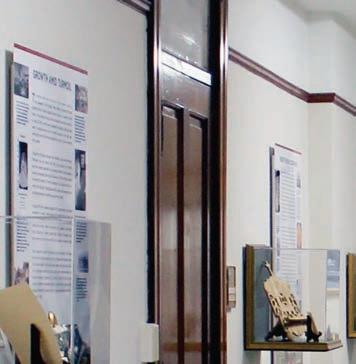
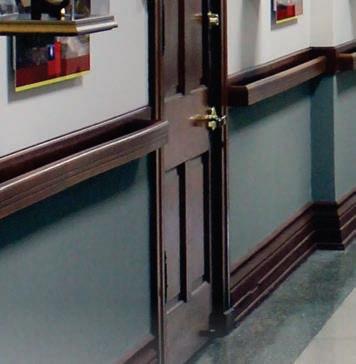

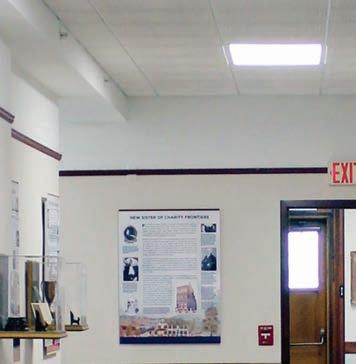
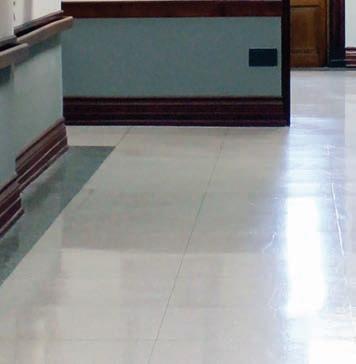
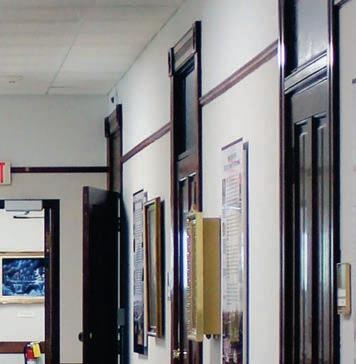


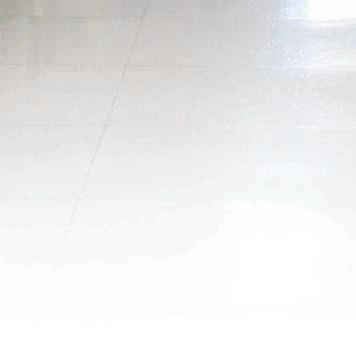
By Katelyn Rieder, Communications intern
estled on the ground oor of the Sisters of Charity of Cincinnati Motherhouse is the Archives—a department dedicated to preserving the rich history and legacy of the congregation. Under the guidance of Archivist Veronica Buchanan and Community Historian S. Judith Metz, the Archives thrives thanks to the faithful support of a dedicated team of Sister volunteers.

“Not all of us can do great things, but we can do small things with great love.”
Veronica speaks with deep appreciation of the Sisters who assist in the Archives, crediting them with expanding what the department is able to accomplish. “ e time and talents that they bring to the Archives make it so we’re able to do so much more than one person could ever do.”
- Mother Teresa
Much of their work involves digitizing physical, historical documents—an essential step in safeguarding materials from deterioration while also making them more accessible for research and sharing. With over two centuries of history and thousands of women in the congregation, the volume of material is immense.
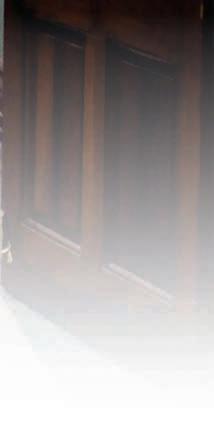
From small daily tasks to major projects, these Sisters generously o er their time and energy to this essential ministry. eir commitment to the SC mission, paired with the love and care they bring to every detail, sustains not only the Archives but the spirit and story of the entire Community.
One facet of the current digitizing project concerns audio and visual content. Much of this lives on physical tapes and CDs— which again run the risk of being ruined over time. As a volunteer for roughly 15 years, S. Joyce Brehm is the main Sister leading this project. Years ago, she recalled seeing several large cabinets in the Archives full of old tapes of oral histories, Vincentian history, Community celebrations, and much more. She realized that if no one was able to digitize the tapes, they would eventually deteriorate and be lost to time. Since then, she has worked to digitize photographs as well.
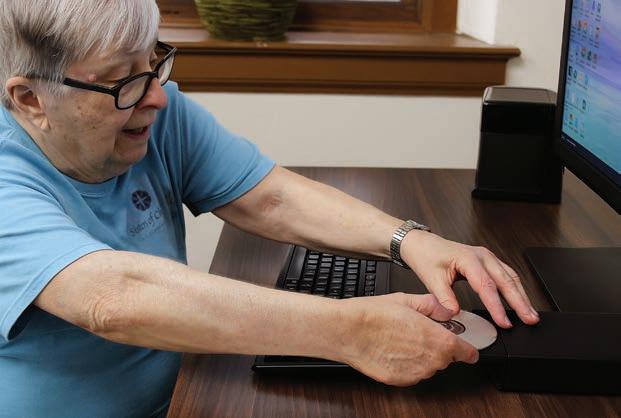

Fifteen years of ministry results in 15 years of stories. It is impossible to miss the way S. Joyce’s face lights up as she recalls bonding with others over old videos and photos throughout the years. Motivated by an unwavering love for the Community, she uses her resources to share warm and touching moments—particularly in di cult times.
Sister recounted a project she started during the COVID-19 pandemic in hopes of bringing a little joy to the lives of Sisters and Associates. From the photo collection she was working with, she would share a few electronically and invite Sisters and Associates to provide fun, light-hearted captions for them. e project sparked laughter and connection during a time of isolation.
“Any one of these things is not Earthshatteringly important,” said S. Joyce. “But they can raise someone’s spirit, and that raises mine.” Whether she knows someone who is going through a rough patch, or just coming across an old video of a friend, sharing the materials that S. Joyce works on creates a domino e ect of love.
S. Judith Ann Ansberry also assisted with the photo digitization project for a period of time. After completing her portion, she now nds a di erent experience each time she volunteers in the Archives. “It’s like an adventure every day,” she commented.
When Sister heard at a Motherhouse meeting that the Archives was looking for volunteers to help with small tasks, she was intrigued. Seeing as she was
retired and a former Vincentian Sister of Charity, this role seemed a perfect t to contribute to the Community while also learning more of its history.
Even before becoming a Sister of Charity, Elizabeth Seton inspired S. Judith Ann. She recalled waiting for a friend at an airport when she saw a book about the saint. Sister brie y ipped through and learned that she was a convert to Catholicism at a controversial time. “I fell in love with how she handled everything. She never put anybody down.”
Perhaps now more than ever, Sister hopes that others will follow Elizabeth Seton’s words to “hazard yet forward” with love and grace.
“We always need to be moving forward in some way. And if our ‘forwardness’ is to pray all the time for the world, for the communities around us, then we’ll do that,” she said. “We’re not going to be sitting here, twiddling our thumbs. Maybe our job in the future is to support everybody else through prayer, and to help them have hope that things will get better.”
Another long-running volunteer project is led by S. Sheila Gallagher, who is building a digital database of Sisters and their ministries. Inspired by her work in the alumni

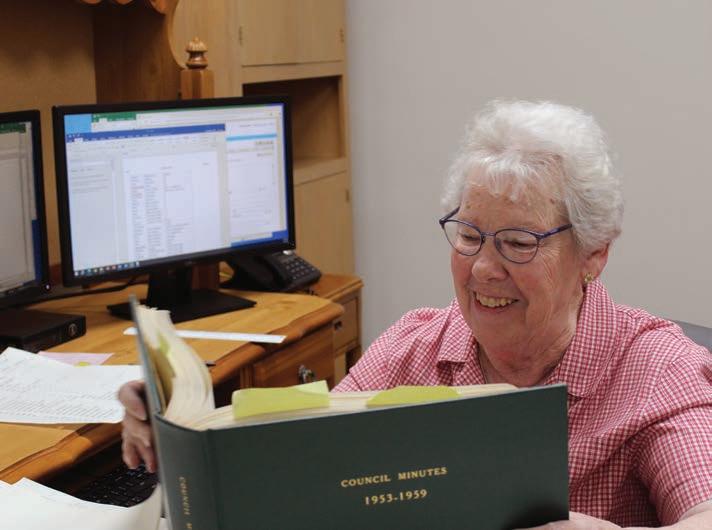
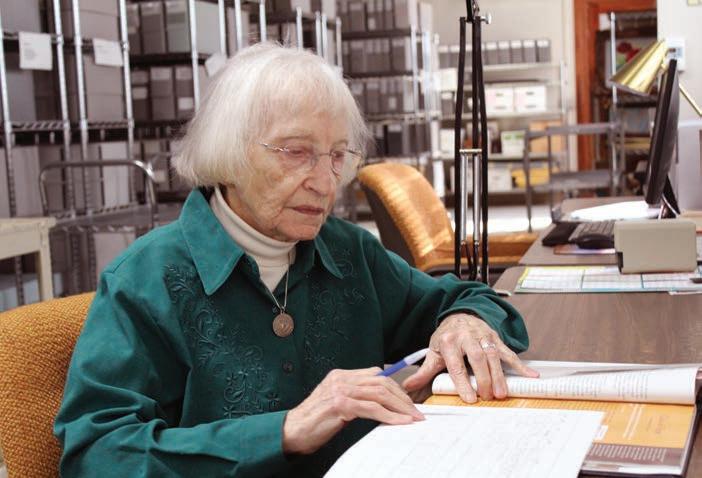

o ce of Holy Name High School in Cleveland, Ohio, Sister realized that it would be a worthwhile endeavor in the Archives to maintain an organized database for all of the missioned Sisters over the years. anks to S. Sheila’s ingenuity, the database has proven to be one of the most helpful resources in the department.
S. Sheila began the project in 2013 with Sisters who worked at Holy Name. From there, her knowledge of the Community led her to create databases for other locations, such as schools in the Cleveland area, Good Samaritan Hospital, and so on. e project has now evolved into a comprehensive database of many years of di erent Community missions. Not only does this logistically preserve the SC legacy of service, but also the memory of each living Sister.
S. Dorothy William Englert in the SC Archives for the past 10 years. Most recently, she has been working on transcribing the letters of the Mother Superiors in the Community from their physical form into the computer. She enjoys this current task greatly not only for its simplicity, but also because the letters can act as a time capsule.
S. Dorothy William has also been transcribing
letters from when the Sisters of Charity ministered in China—a time before she was even born. Reading their exchanges allows her to “catch up on the gossip” she otherwise would’ve missed.
“ ere’s always something to be learned from the past,” she said. “ ere’s always new ministries, there’s always new places and people that need to be taken care of.”
Similarly, S. Patrice Vales dedicates her time to indexing past issues of Intercom, carefully noting who is featured, who authored each article, and providing a brief summary of the content. Her goal is simple yet profoundly meaningful: “Besides prayer, I want to be of service to my Sisters.” For the past ve years, she has lived out this intention through her volunteer work in the Archives. e index she creates o ers fellow volunteers an easy way to locate material and helps others discover the lives and contributions of Community members throughout the years.
With nearly 19 years of volunteer service, S. Patrice brings a wealth of experience and a deep reverence for the history of the Sisters of Charity. Her time in the Archives has only strengthened that admiration. “Look at what they have done and what they have built,” she re ects. “ ey started with just seven people—but look how well they worked together to build the Community into what it is today.”







S. Marie Tessmer, who works in the Repository, says, “Mary Lucia has really shown me the way around here.” e Repository holds many documents and artifacts for preservation. S. Marie has been working through these collections and ensuring the organization is accurate and simple. is may include making corrections to box labels, re- ling materials, and digitizing documents.



Staying active is important to her. “Some of us can get caught up in the ‘doing,’ and when you’re not doing that thing anymore, you can feel like you’re worthless,” she said.




“Discovering that you have value simply by being yourself is a new realization for many of us. God’s love isn’t based on what you do—it’s who you are that gives meaning to what you do.”

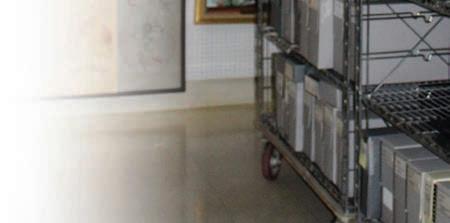

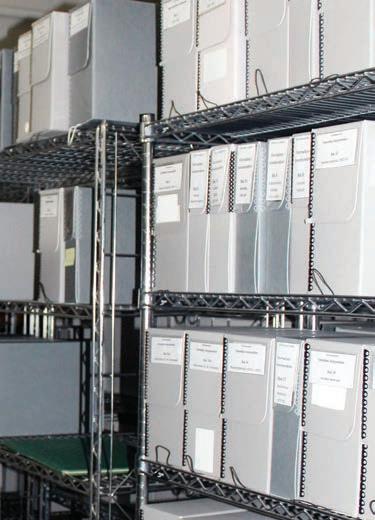


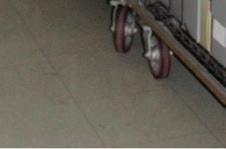
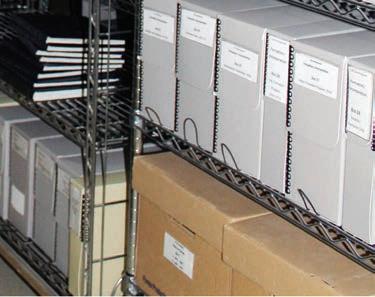
Religious life is in a time of transition. Fewer individuals are entering consecrated life, and the number of Sisters of Charity in the Community is smaller than it once was. While the future holds uncertainty, the past remains a foundation worth safeguarding. By preserving their history today, the Sisters of Charity ensure that their legacy and charism endure.
e Sisters who serve in the Archives embrace this reality. eir quiet, faithful ministry echoes the words of Mother Teresa: “Not all of us can do great things, but we can do small things with great love.”
As she re ects and reads through these historical documents of past Community gatherings, S. Marie comes to understand how the congregation has grown to what it is today.
“Instead of being out in the world as much, the time has come where our mission is to each other,” she said. By taking care of each other on a smaller scale, the Sisters of Charity can continue their mission in a di erent way.
In the quiet work of sorting, scanning, indexing, or transcribing, the Community’s story continues to be told. And, through it, the mission lives on. By honoring their past, living fully in the present, and preparing for the future, the Sisters of Charity move forward in mission together.
Author’s Note: We would also like to acknowledge Associate Patrice Harty, who is generously donating her time weekly assisting S. Joyce Brehm in organizing the Archives’ photo collection.
By S. Joan Elizabeth Cook
S.Martha Glockner has always loved to learn and nd meaning in every aspect of life. She was born in Portsmouth, Ohio, where her father, Alexander John, had grown up. He and his wife, Mary Margaret Williams, who was born in McDermott, Ohio, made their home there. Her mother developed a fondness for the Sisters of Charity during her student days at the College of Mount Saint Joseph-onthe-Ohio, an a ection that endured throughout her life.
When Martha was a few months old, her mother took her to the Mount to visit. S. Maria Corona Molloy laid Martha on the Mary altar in the chapel and dedicated her to Our Lady of Perpetual Help, whose picture rested in front of the statue of Mary. at blessing remains special to Martha. She recalls her mother often speaking of the comfort and strength it gave her as a young, stay-at-home mother facing the challenges of raising a family in the wake of the Depression.
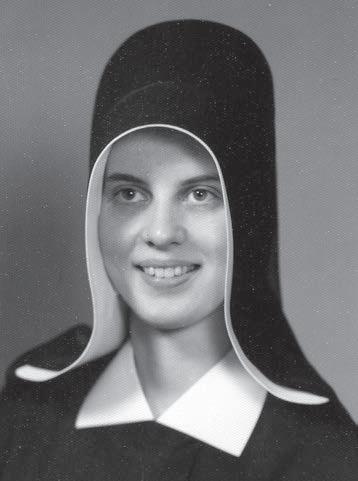

completed her elementary education at Holy Name School in Columbus, which became the family home. For high school, she attended Our Lady of the Springs Academy. Just before starting her junior year, Martha contracted the dreaded and debilitating disease of polio. As she re ects on that time, she notes ways it has in uenced her appreciation for her own and other peoples’ limitations and gifts.
She began college at her mother’s alma mater, the College of Mount St. Joseph. ere she was deeply impressed by the Sisters of Charity –their joyfulness, attentiveness to the students, and the many opportunities they provided for personal and spiritual growth. She loved the beauty and symbolism of the sacraments and the Motherhouse liturgy, especially S. Marie Concetta Papania’s “Missa Solemnis.”
Martha’s brothers John and Mike, continuing the family custom of service to church and society, were very active in Boy Scouts. e family moved several times when Martha’s father, an Internal Revenue Service agent for the Federal government, was promoted and transferred.
Martha enjoyed reading and visiting art galleries and museums, where she learned about the Native American and pioneer history in Central Ohio. Living in Columbus, the Glockner family resided near a gallery on e Ohio State University (OSU) campus, where she was particularly drawn to exhibits featuring the lives and cultures of Native American and pioneer communities who once inhabited the region. Her interest in local history was further enriched by attending the summer outdoor drama Tecumseh! near Chillicothe—a powerful portrayal of the Shawnee leader’s e orts to defend his people’s homeland during the 18th century.
Martha began her education at St. Lawrence School in Ironton, attending rst grade and the rst semester of second grade. She then moved to St. Mary’s in Marion for the remainder of second grade through fourth grade, and
e example of her mother’s cousin, S. John Francis Burns – a devoted high school educator and a model of one who loved the SCs – was a strong in uence. But it was her mother’s deep faith, loving guidance, and formative in uence that especially nurtured God’s call for her to enter the Sisters of Charity in 1955. She received the name S. Marian erese. Martha recalls her initial formation as a time of sorting out what brought her and her fellow Band members to the congregation, and deepening their understanding of what they were looking for in religious life.
After professing rst vows, S. Martha taught at Holy Redeemer School in Kensington, Maryland; Holy Trinity Elementary School and Trinidad Catholic High School in Trinidad, Colorado; and Seton High School in Cincinnati, Ohio. During this time, she attended summer school in Santa Fe, New Mexico, and at the College of Mount St. Joseph to complete her bachelor’s degree in general science. She was then missioned to study at Laval University in Quebec, where she earned a licentiate in philosophy. S. Martha later taught philosophy at the Mount and served for several years as SC director of initial formation before joining the philosophy faculty at Aquinas College in Grand Rapids, Michigan.


During that time in the years following the Second Vatican Council, Rome requested that religious congregations revisit congregational practices and documents. S. Martha resumed her baptismal name, and she chaired the committee to revise the congregational constitutions. She led the committee in organizing sessions for Sisters to provide input as they re ected together on the structures and values important to them in a changing world. After the revised Constitutions were approved in Rome, S. Martha wrote, “ ese writings remain, I dearly hope, a living document. Every tree – to bear growth – and health-enhancing fruit –requires pruning, cultivating, nurturing, and good gardeners.” At the same time, she recommended, “We need to honor our mixed emotions, o ering a welcoming place not only for laughter but for tears” – wise advice for us today in the midst of the changing realities of 2025.
S. Martha’s commitment to meaning-making led her to further studies in myth and symbol, spirituality, ethics, and family-of-origin issues a ecting women. She became a chaplain resident at Pine Rest Christian Psychiatric Hospital and St. Mary’s Hospital in Grand Rapids, where she enrolled in the Clinical Pastoral Education (CPE) program. During her years of training to become a CPE supervisor, she deepened her ability to help others nd meaning in their own lives. She went on to serve as an assistant director of pastoral care at OSU Hospital, and later as a spiritual director and CPE supervisor in ree Rivers, Michigan.
In these di erent clinical settings, her duties and experiences included individual counseling, arranging clergy





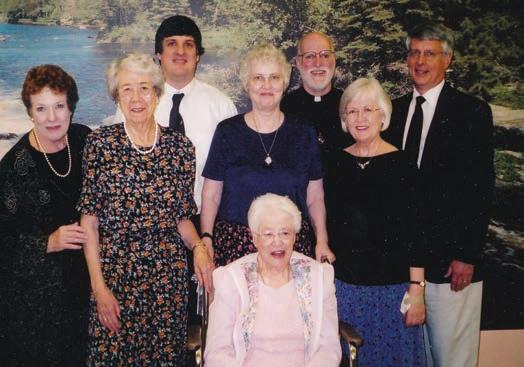

education sessions, and facilitating support groups for adult survivors of childhood abuse. She also coordinated mission e ectiveness programming and evaluation.
S. Martha organized support groups for nurses working in stressful settings such as burn units, gynecological oncology, respiratory therapy, and pediatrics. She served on hospital ethics committees and led CPE programs. Re ecting on her work, she shared that she experienced joy “each time a person acknowledged a self-hating habit and began to develop new patterns for digni ed living.”
In 1992, the Diocese of Columbus recognized the breadth and depth of S. Martha’s ministry at OSU Hospital in granting her the Pro Ecclesia et Ponti ce Award for outstanding service to the local church. e following year the Association for Clinical Pastoral Education honored S. Martha and a colleague with the Researcher of the Year award for their study of the impacts of family members’ depression on pastors.


When many of her friends and colleagues in ree Rivers began to downsize, transition to senior living, and simplify their lifestyles, S. Martha recognized that it was time for her to move to Cincinnati. Since moving to the Motherhouse, she has appreciated the time to re ect on the blessings of her rich and full life. She welcomes opportunities to deepen her relationships with the Sisters and is grateful to serve around the Motherhouse in various ways. With gratitude and joyful anticipation, she looks forward to celebrating her 70th Jubilee as a Sister of Charity with her Band members this August.
By Angela Anno, Associate
In 1886, a group of German and Italian immigrants began establishing a community in the emerging neighborhood of North Fairmount in Cincinnati, Ohio. ey were drawn to the area’s lush greenery and peaceful atmosphere. ey built homes, opened stores and schools, and developed lifelong friendships. Life was good – but something was missing. ey longed for a church of their own, a sacred place to worship God who had been so good to them.
ey began planning and saving money to build a church. By 1904, they had completed the church basement—much of it built with their own hands—and began gathering for Mass. e current church was completed in 1911. For more than 60 years, St. Leo’s thrived as a vibrant parish with a school and many ministries that served both church and community.
Eventually, as people moved to the suburbs, Mass attendance declined, and the neighborhood grew poorer. Yet in God’s providence, this poverty became a gift—it opened hearts and helped parishioners welcome immigrants eeing violence and poverty in Latin America, and refugees escaping genocide in Africa.
e parish’s 125th anniversary celebration provided a visible sign of the growing unity. In the opening procession, the oldest parishioner—a women in her 90s whose dad did masonry work on the church— entered alongside the youngest parishioner, a newborn Guatemalan infant. St. Leo’s was becoming one family. We came to believe that if we could pray the Eucharist together, we could do anything together— and it proved true.
e once-dwindling congregation is now growing. A new generation of immigrants and refugees is renewing the parish’s spirit of welcome and community.
Today, St. Leo’s is a multicultural parish where Anglos, African Americans, Hispanics, and Africans praise God as one family. “My heart lls with joy when we pray together on Sunday,” said a Guatemalan woman. An African parishioner added, “It is our privilege … we are all brothers and sisters of Jesus.”
Mother Seton, who dedicated her life to those on the margins, would have been right at home at St. Leo’s, and Sisters and Associates are living out her mission today.
S. Tracy Kemme joined the parish sta in 2020 as pastoral associate for adult faith formation where she helped develop bilingual programs on social justice, scripture and climate change, and coordinated programs with partner parishes to share St. Leo’s mission. When she transitioned to a new ministry, she introduced Angela Anno, then a volunteer pastoral associate at St. Leo’s, to the Associate program. Now an Associate herself, Angela sees her ministry with immigrants and refugees as an extension of her commitment to following in Mother Seton’s footsteps.
St. Leo’s also has been collaborating and sharing resources with S. Sandy Howe whose ministry is working with and advocating for refugees and persons seeking asylum. Before she left for a new ministry in Washington, D.C., Nigerian S. Victoria Anyanwu and African refugees shared recipes and native remedies. eir cultural connections were also evident in their sharing of prayer and relationship with God.
S. Cj Willie joined Angela in teaching an online First Communion class during COVID and now helps support immigrants in knowing their rights. She brings additional resources from her work in Africa and Latin America as well as trainings she attends. Being bilingual is an asset in her ministry.
Associate Kathy McDonald has joined the multicultural Sunday music group, while Associate S. Karen Elliott, CPPS, o ers support to immigrants by assisting with paperwork and accompanying them to court.
Other Sisters and Associates volunteer with parish projects, embodying the Sisters of Charity’s mission: “Urged by the love of Christ and in the spirit of our founder, Elizabeth Ann Seton, we Sisters of Charity of Cincinnati strive to live Gospel values. We choose to act justly, to build loving relationships, to share our resources with those in need, and to care for all creation.”




















Allen Sanchez never expected to become the petitioner for a cause of canonization—let alone champion justice so boldly in New Mexico’s halls of power. But inspired by the Servant of God Blandina Segale, SC—whose fearless compassion and tireless work for the marginalized shaped a legacy of justice—Sanchez found himself doing just that. e roots of his advocacy trace back to childhood. In the early 1970s, Sister of Charity Marie Virginia Lovato, his teacher at St. Mary School in Albuquerque, introduced him to Sister of Charity of Cincinnati Blandina through a school play. Her courage and compassion left a lasting impression.






Years later, amid tensions following the sale of an Albuquerque hospital, Sanchez received a copy of Blandina’s writings. “All the answers were in it,” he recalls. Her fearless resolve helped shape his vision for a bold statewide health initiative focused on early childhood well-being in New Mexico—a state then ranked last in child welfare. at vision gave rise to St. Joseph’s Children, a nonpro t created from the hospital’s transition into a new mission. Inspired by S. Blandina’s determined compassion, Sanchez and his team focused on early childhood development, hunger, poverty, and educational access in a state rich in resources but burdened by inequality.









When diocesan o cials hesitated to open her cause for canonization due to limited resources, Sanchez pushed back. “ ere’s nothing in canon law that says a cause should be denied for lack of time,” he said. Months later, the Archdiocese of Santa Fe opened the cause, naming him petitioner. “I gave the archbishop work,” Sanchez laughs, “so he gave me work.”

“We needed to speak up for children,” Sanchez says. “New Mexico is rich in so many ways, but our children weren’t bene ting. at was a moral emergency.”
When traditional advocacy stalled, Sanchez turned to storytelling. New Mexico Truth, a campaign that contrasted glossy tourism ads with the real struggles of families, garnered national attention and helped shift public perception. e result: a constitutional amendment passed with 73 percent of voter support, securing long-term funding for early childhood programs.


Today, Blandina’s legacy is felt far beyond the canonization e ort. Her image appears in classrooms, government o ces, and homes in New Mexico and beyond. Teachers call on her as a patron. Families visit her grave and leave feeling seen—accompanied by someone who walked with faithful resolve.
“She helped people nd courage they didn’t know they had,” Sanchez says. “ at’s her miracle.”
For him, the cause is not about placing one person on a pedestal—it’s about igniting a movement of compassion and action. “She invites us to ask: Who is the vulnerable? What do they need from me? And how can I respond with love?” he says. at question lies at the heart of sainthood—and of the Sisters of Charity’s enduring mission. As S. Blandina once stepped forward to meet the needs of her time, the Sisters, their Associates, and partners in ministry do the same today, asking daily: Who are the vulnerable, and what do they need from me?


S. Blandina’s in uence shaped this kind of creative courage. “She once threatened to deliver bodies to the doorstep of a commissioner who refused to fund proper burials,” he recalls. “If she could act with such bold love, I knew I could nd my own way, too.”
Like Blandina, Sanchez doesn’t back down easily. He has challenged oil companies, political leaders, and systems of injustice—with deep faith and a heart tuned to the needs of the vulnerable. “Blandina o ered the blueprint for advocacy rooted in faith, creativity, and courage.”

In lifting up her cause, Sanchez is not just honoring a courageous Sister of Charity. He’s extending her invitation to all of us—to walk the Gospel path she lived: one of fearless compassion, creative justice, and love in action.

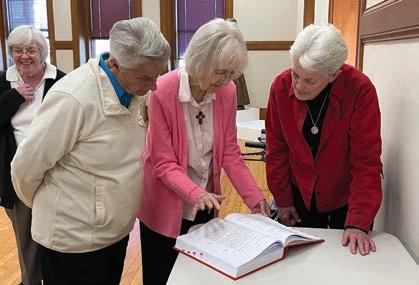


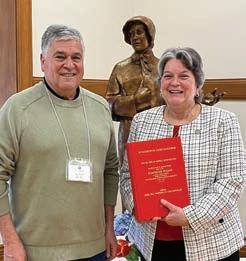

In January 2025, it was announced that nine Vatican historians had approved the positio—an 800-page document summarizing the investigation into Sister Blandina’s life and heroic virtues. The next step is review by Vatican theologians, followed by a vote from the Bishops of the Vatican Dicastery for the Causes of Saints.

Sisters and Associates welcomed Allen Sanchez to the Motherhouse on Feb. 23, for an update on the cause for canonization of Sister of Charity of Cincinnati Blandina Segale. Sanchez (left), the petitioner for the cause, also delivered the Community’s official copy of the positio and the votum from the historical consultants to Sisters of Charity president Monica Gundler (right).


5900 Delhi Road
Mount Saint Joseph, OH 45051
http://www.srcharitycinti.org www.facebook.com/sistersofcharityofcincinnati
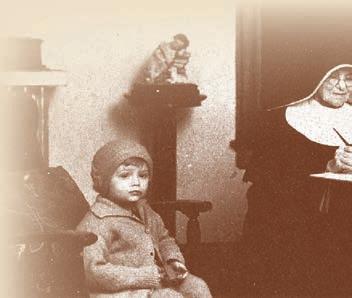

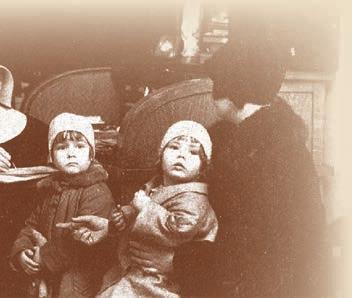

InJune 2014, the Archdiocese of Santa Fe, New Mexico, announced that the Vatican had approved the opening of the cause for canonization of Sister of Charity of Cincinnati Blandina Segale. With this recognition, she received the title Servant of God.
Servant of God Blandina Segale, SC, was—and remains—a powerful example of the di erence one woman of faith and conviction can make. Her steadfast determination, compassion for those on the margins, and fearless pursuit of justice were visible in every act of service—from defending the rights of Native Americans and confronting outlaws, to welcoming immigrants with dignity. Today, that same courageous and loving spirit lives on in the ministries of the Sisters of Charity.
To learn more about the remarkable life and legacy of Servant of God Sister Blandina Segale, visit www.srcharitycinti.org.

